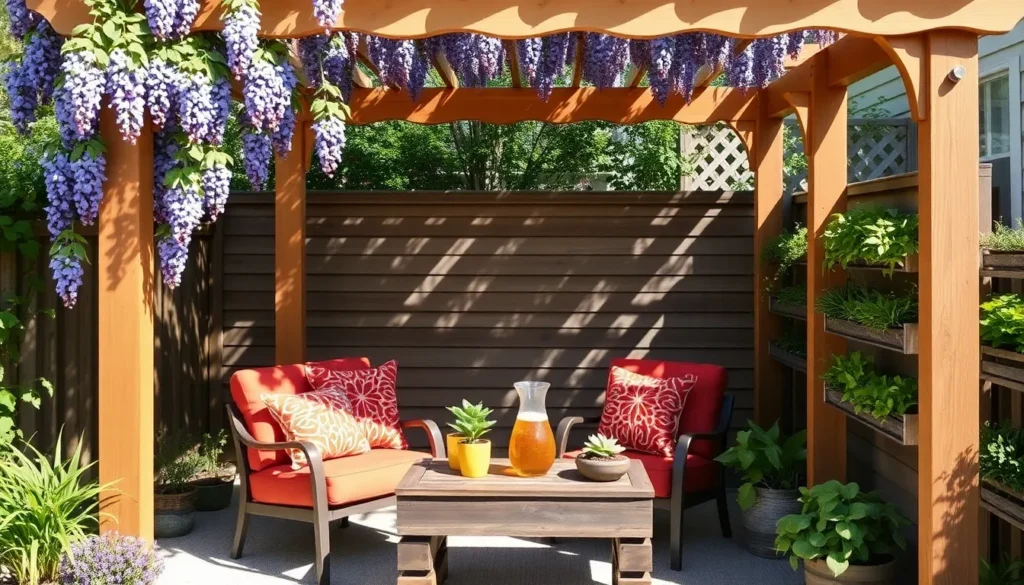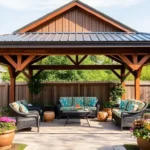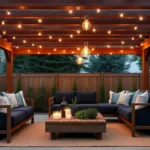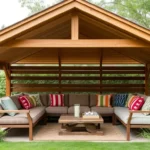Imagine stepping into your backyard, where even the smallest garden can become a serene oasis with the perfect pergola. Whether you’re a beginner eager to embark on your first outdoor project or a seasoned homeowner looking to refresh your space, “Budget Pergola Ideas for Small Gardens” is your key to unlocking the potential of your outdoor area without breaking the bank. This guide is packed with creative and affordable ideas that will inspire you to transform your garden into a beautiful retreat.
In just a few steps, you can elevate your garden, providing not only shade and structure but also a personal touch that reflects your style. With these budget-friendly pergola ideas, you’ll gain the practical know-how to create a stunning outdoor living space that invites relaxation and joy. Let this guide be your companion in crafting a garden haven that you can be proud of, boosting your confidence and delighting your senses.
Utilize Reclaimed Wood for Structure
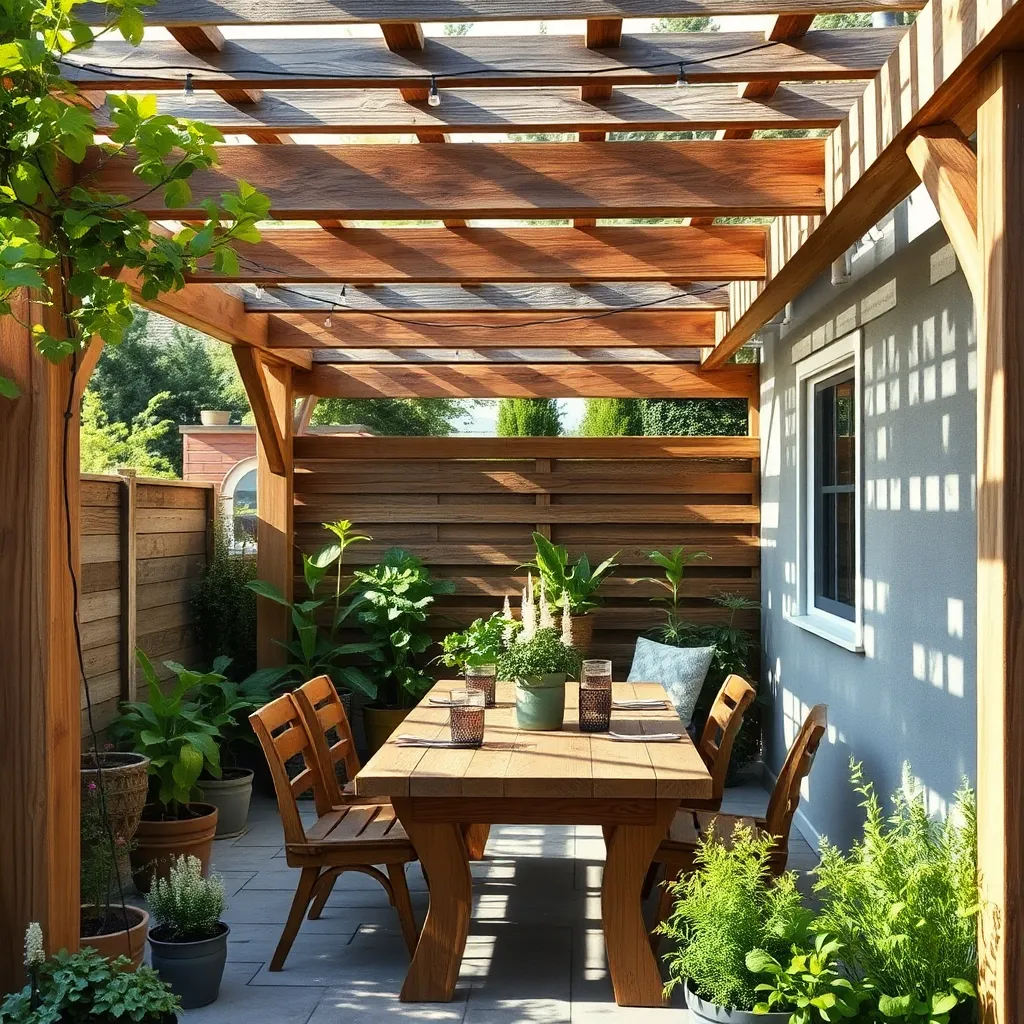
Reclaimed wood offers a unique opportunity to build a budget-friendly pergola that adds character to your small garden. Start by sourcing sturdy pieces of wood from old barns, pallets, or even discarded fences. Ensure the wood is treated and weather-resistant to withstand outdoor conditions. For beginners, focus on simple structures by using basic tools like a saw and a power drill, ensuring your cuts are precise. Advanced builders can incorporate intricate designs, like latticework or angled beams, to create a more sophisticated look.
When designing your pergola, consider a basic structure that measures about 8 feet tall, with a width and depth that fits your space—typically around 10×10 feet for small gardens. Secure the posts into the ground with concrete for stability, especially in windy areas. To enhance your pergola’s functionality, add hooks or brackets for hanging plants or outdoor lights. For a polished finish, sand the wood and apply a sealant to protect it from the elements, ensuring longevity and an inviting aesthetic.
Incorporate Climbing Plants for Shade
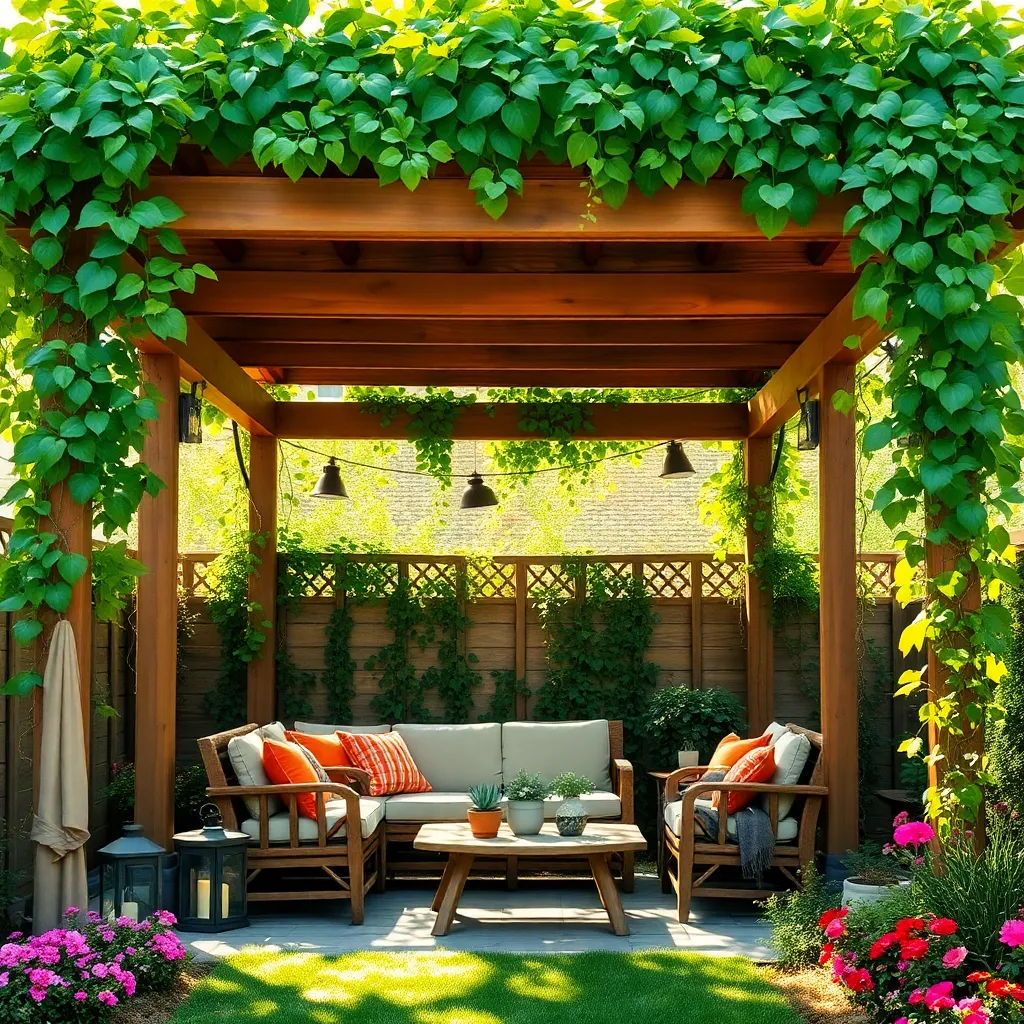
Incorporating climbing plants into your pergola design is an effective way to add natural shade and a touch of beauty. Begin by selecting fast-growing climbers such as **Clematis**, **Wisteria**, or **Honeysuckle**, which are known for their lush foliage and vibrant blooms. For beginners, using trellis panels or wire guides along the pergola beams can help guide the plants as they grow, ensuring they cover the structure evenly and provide maximum shade during hot summer days.
When designing your pergola, consider the spacing and support needed for the chosen climbing plants. **Ensure the pergola beams are sturdy enough** to support the additional weight of mature plants, and use materials like galvanized wires or strong twine for tying and training the vines. For a more advanced approach, introduce a mix of perennials and annuals to maintain year-round interest, combining evergreen climbers with seasonal blooms for a dynamic display. With the right plants and a little planning, your pergola can become a lush, shaded retreat in your garden.
Add DIY Fabric Canopy Covers
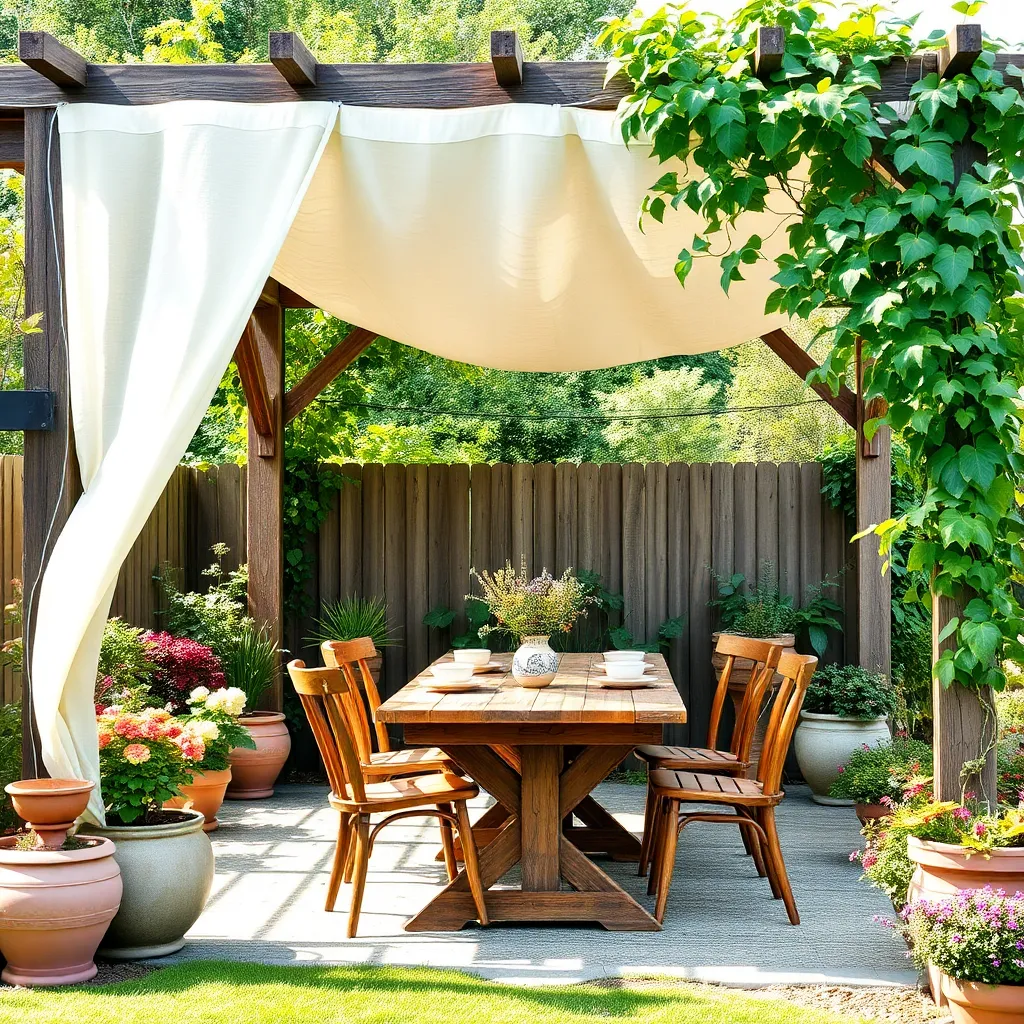
Transform your pergola with a DIY fabric canopy cover to create a versatile outdoor haven. Start with a simple setup using weather-resistant fabric like Sunbrella or a heavy-duty canvas that can withstand the elements. Measure the dimensions of your pergola and add a few extra inches to ensure ample coverage. Use sturdy grommets and durable ropes for attaching the fabric securely, allowing you to adjust or remove it as needed. This approach not only provides instant shade but also adds a touch of elegance to your garden space.
For a more advanced touch, consider adding multiple layers of fabric for a dynamic, textured look. Create a billowing effect by draping the fabric loosely over the pergola beams and securing it at strategic points. Enhance stability by installing a track system or using tension rods to support the fabric, especially in windy areas. Choose complementary colors or patterns that match your garden’s aesthetic to elevate the overall design. Whether you’re looking to create a cozy corner or a stylish gathering spot, a fabric canopy is a budget-friendly way to enhance your outdoor living area.
Opt for Modular Pergola Kits
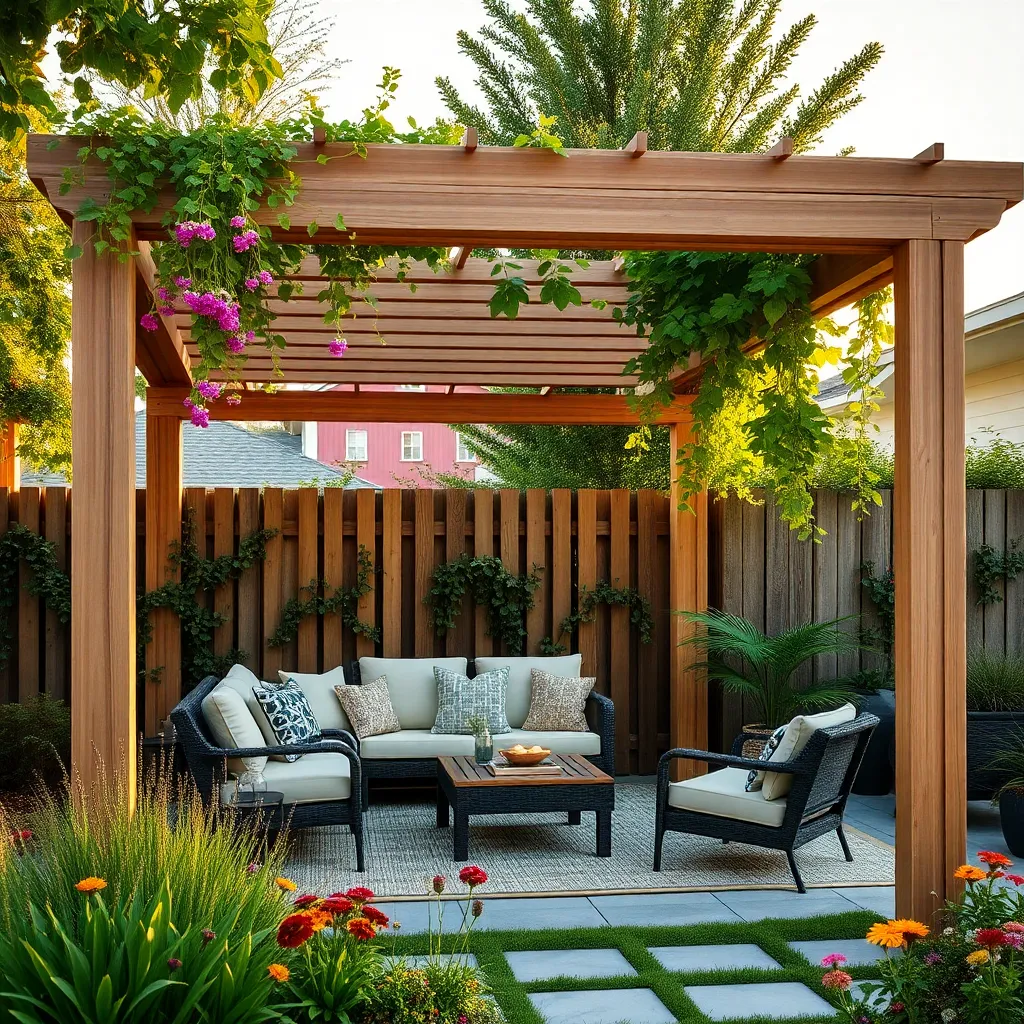
Modular pergola kits are an excellent choice for small gardens, offering the flexibility to tailor your outdoor space without the need for extensive construction skills. These kits feature pre-cut materials and straightforward assembly instructions, making them accessible for beginners. Look for kits made from weather-resistant materials such as aluminum or treated wood, which ensure longevity and minimal maintenance. For a more personalized touch, consider adding decorative elements like climbing plants or hanging lights to enhance the atmosphere.
For those with a knack for design, modular kits often allow for customization, so you can adapt the structure to fit your unique garden layout. Consider adding adjustable louvers or a retractable canopy for increased versatility, providing shade on sunny days and open skies on starry nights. When selecting a kit, measure your space carefully and choose dimensions that complement your garden without overwhelming it. With a bit of planning, a modular pergola can transform your outdoor area into a charming and functional retreat.
Enhance Space with Vertical Planters

Transform your pergola into a lush, green oasis by incorporating vertical planters. These planters are perfect for small gardens, utilizing vertical space to maximize greenery without crowding the ground. Choose materials like cedar or treated wood for durability, and consider using recycled pallets for an eco-friendly option. Attach planters to the pergola posts or hang them from the beams, ensuring they are securely fastened to withstand wind and rain.
For beginners, start with easy-to-care-for plants like succulents or herbs, which thrive in vertical arrangements. More advanced gardeners can experiment with a mix of cascading flowers and climbers such as petunias and clematis. Ensure good drainage by lining planters with landscape fabric and adding a layer of gravel. To maintain a cohesive look, opt for a unified color palette or theme.
- Tip: Use self-watering planters to reduce maintenance.
- Tip: Install a drip irrigation system for consistent watering, especially in hotter climates.
Conclusion: Creating Beautiful Outdoor Spaces
In “Budget Pergola Ideas for Small Gardens,” we’ve explored five key relationship concepts that can transform your outdoor space into a haven of connection and intimacy. First, we discussed the importance of creating a cozy, inviting atmosphere that encourages meaningful conversations. Second, we highlighted how incorporating personal touches can reflect shared interests and create a unique bond. Third, the strategic use of lighting was shown to set the mood and foster romance. Fourth, we examined how space optimization can facilitate both togetherness and moments of solitude. Lastly, we emphasized the value of sustainability in nurturing a lasting connection with nature and each other.
As an actionable next step, consider starting with a simple DIY project this weekend, like adding fairy lights or planting a climbing vine together. This will not only enhance your garden but also strengthen your partnership.
Don’t forget to bookmark this article as your go-to guide for creating a budget-friendly retreat that nurtures your relationship. By investing time and creativity into your shared space, you’re laying the foundation for a successful and enduring partnership. Remember, every small step you take today brings you closer to a flourishing relationship tomorrow.

